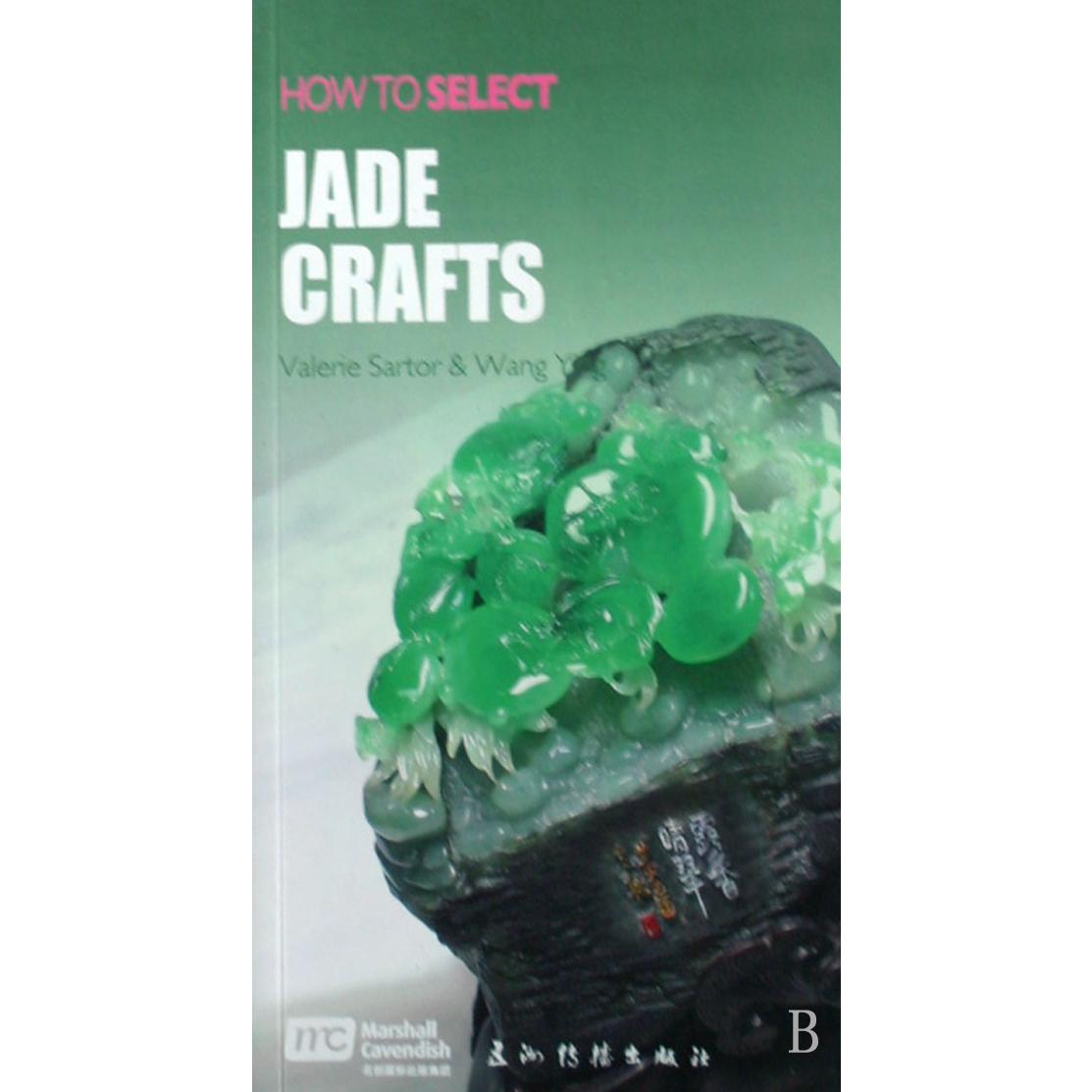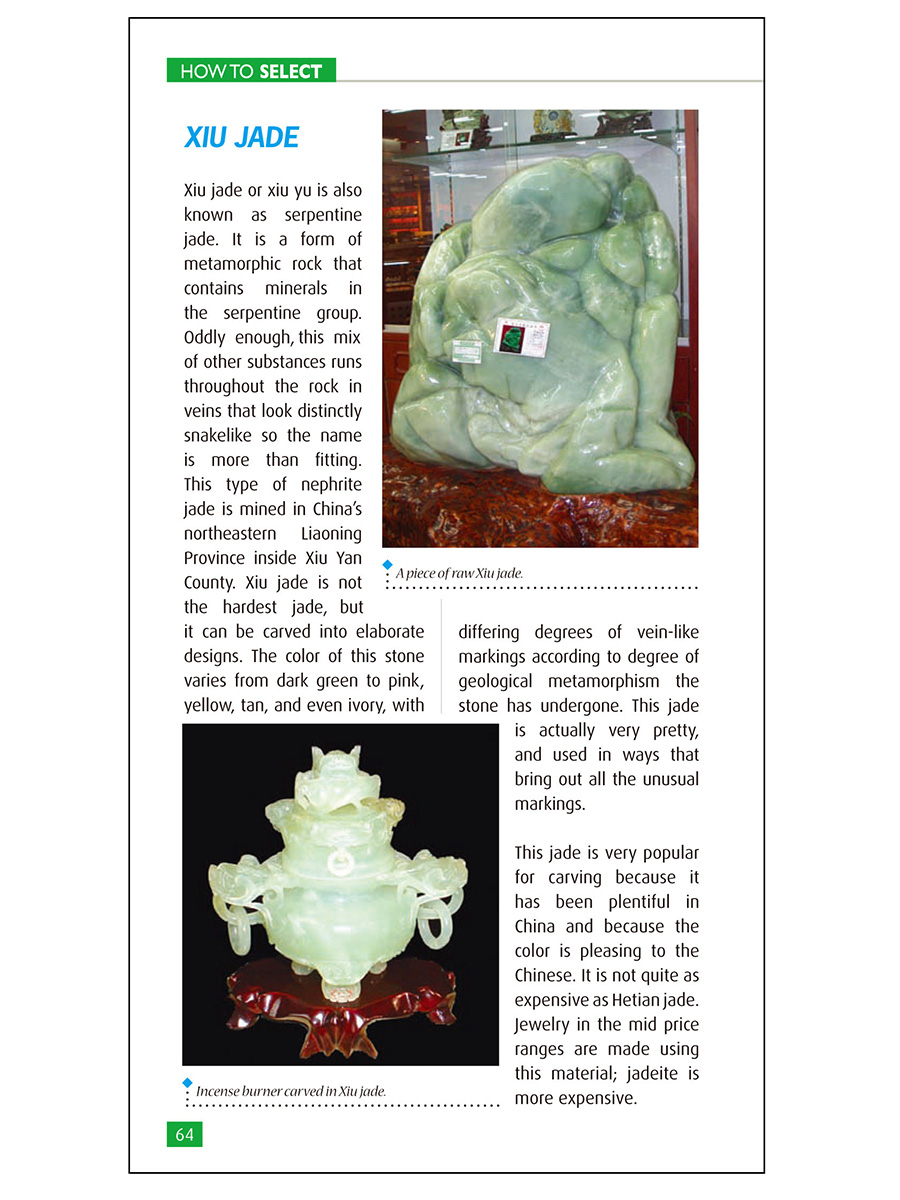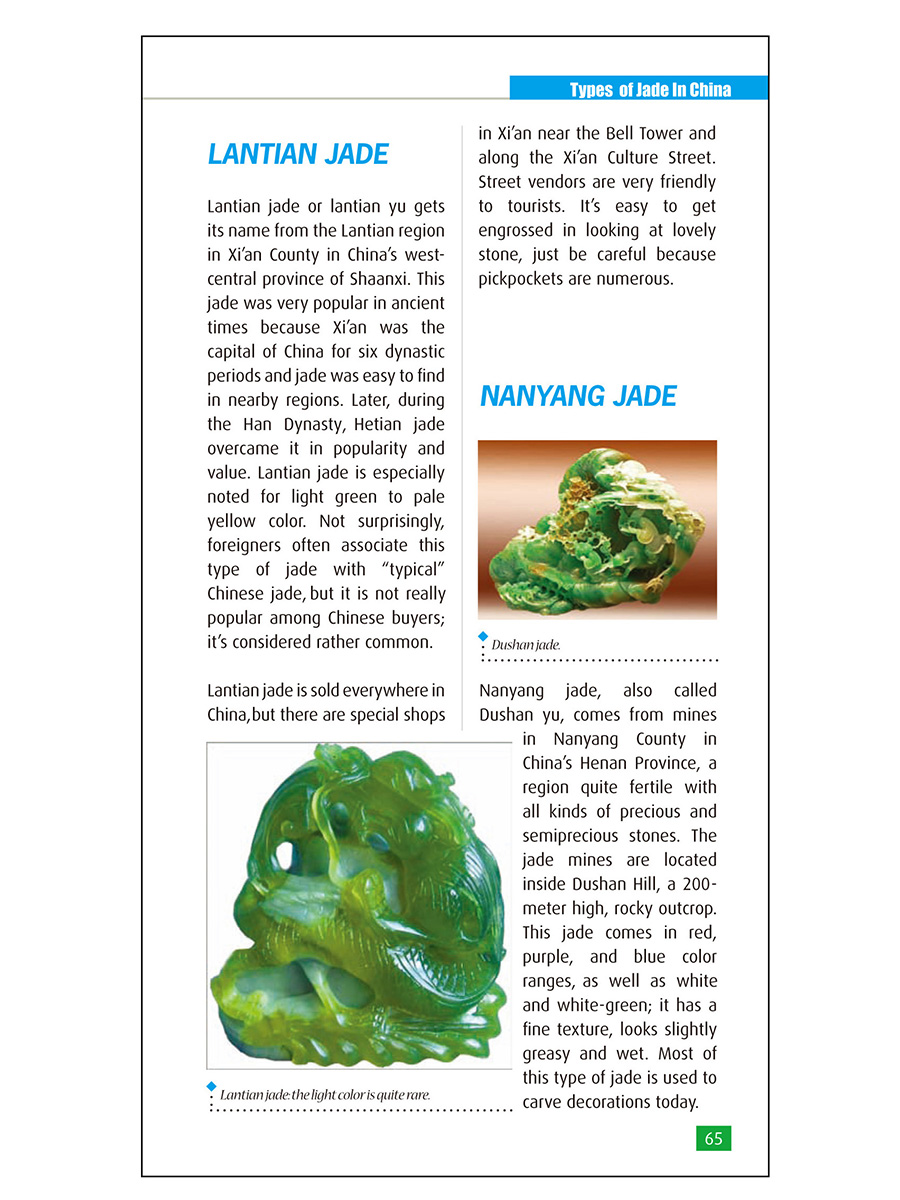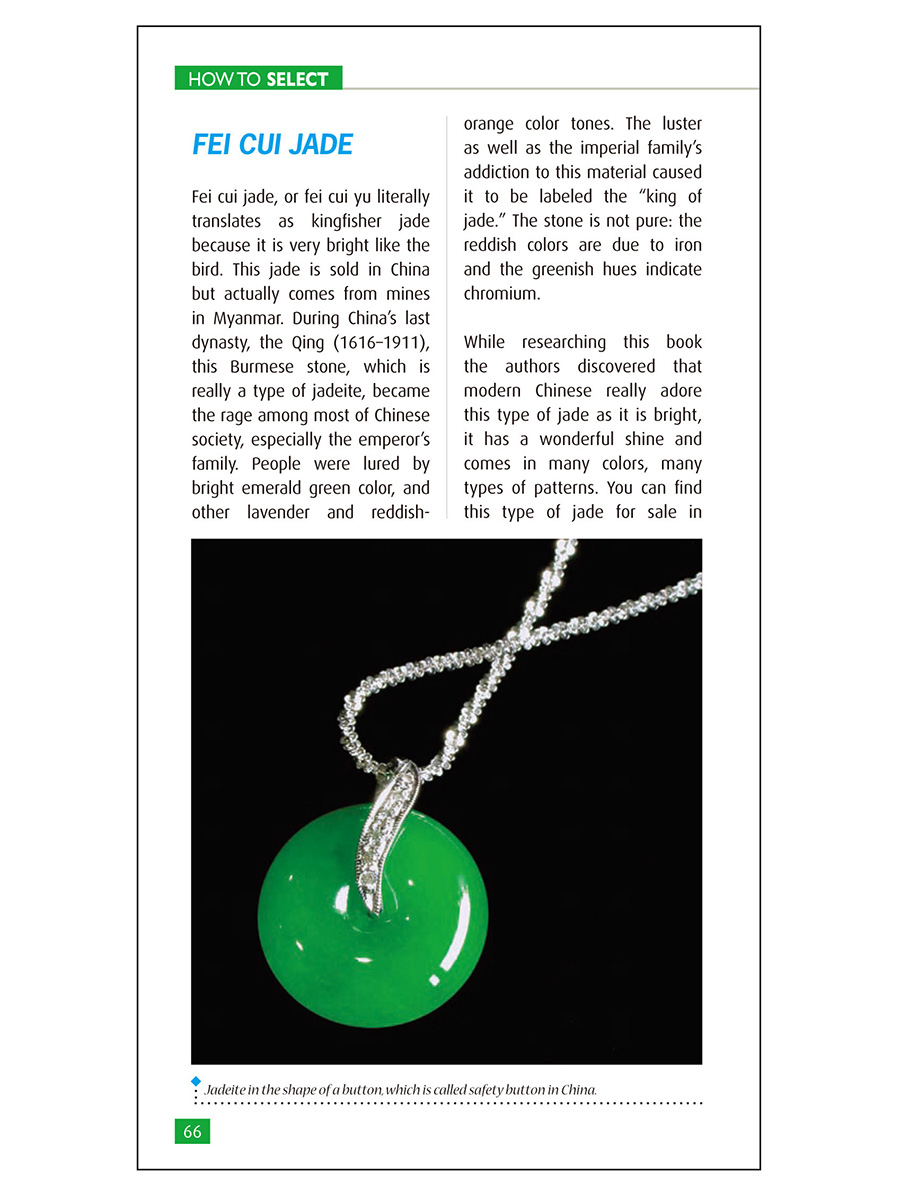
出版社: 五洲传播
原售价: 68.00
折扣价: 38.76
折扣购买: 如何挑选中国玉(英文版)
ISBN: 9787508514840

Other Types of Jade I decided to add this section because, as a foreign guest living in China, whenever I asked about jade while speaking Chinese I always got many mixed reactions. Traditionally, most Chinese people over the age of 60 consider any beautiful hard stone as yu or jade because historically the word represents any beautiful, hard stone. In Xinjiang I’ve purchased carved animals made of different kinds of agates; they were sold to me as “jade animals” and they’re quite lovely. Additionally, there are small areas in China where pockets of jade are located. We found a nice variety from He Nan, with a very friendly shopkeeper and reasonable prices. She assured us that her jade had been mined out of nearby hills. Even more signifi cant is the fact that the Chinese categorize turquoise as a form of blue jade. Chinese books on jade uphold this appellation and it is true that turquoise and jade are sometimes found near each other. When a dealer in Chaoyang sells this stone to western foreigners she calls it turquoise, but when she sells it to Asians she calls it “blue jade from Hebei Province” or “blue jade from Tibet.” The Tibetans, by the way, value their “blue jade” or turquoise over all stones, just as do many Native American peoples. Interestingly, in November 2007, Chinese miners discovered a huge jade deposit in Dashetai in Urad Front Banner, Inner Mongolia. It consists of nearly 30 million cubic meters of exposed jade ore, which is of high quality and present in large pieces. The Autonomous Region has not yet decided how to process all this material that they have named “Shetai jade.”


